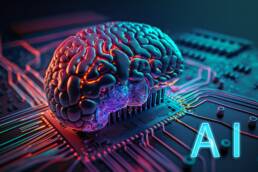Generative AI is a type of artificial intelligence that can create new content, such as images, videos, text, and music. It does this by learning from existing data and then generating new content that is similar to the data it was trained on.
Generative AI is still under development, but it has the potential to revolutionize many industries, including:
- Art and design: Generative AI can be used to create new and innovative works of art and design. For example, it can be used to generate new fashion designs, architectural blueprints, and video game assets.
- Entertainment: Generative AI can be used to create new and engaging forms of entertainment, such as movies, TV shows, and video games. For example, it can be used to generate realistic special effects, create new characters and worlds, and even write new scripts.
- Education: Generative AI can be used to create personalized learning experiences for students. For example, it can be used to generate practice problems, feedback, and even personalized textbooks.
- Science and research: Generative AI can be used to accelerate scientific research and discovery. For example, it can be used to generate new hypotheses, design experiments, and analyze data.
Generative AI has the potential to democratize creativity and make it more accessible to everyone. It can also help us to solve some of the world’s most pressing challenges, such as climate change and disease.
However, it is important to use generative AI responsibly and ethically. We need to ensure that generative AI is used to create positive and beneficial outcomes for everyone.
How can we ensure that generative AI is used responsibly and ethically?
One way to ensure that generative AI is used responsibly and ethically is to develop guidelines for its use. These guidelines should be based on common sense ethical and moral standards. They should also be developed in a participatory and inclusive manner, with input from all stakeholders, including researchers, developers, users, and the public.
Another way to ensure that generative AI is used responsibly and ethically is to educate the public about its risks and benefits. People need to be aware of the potential for generative AI to be used for malicious purposes, such as spreading misinformation and disinformation. They also need to be aware of the potential for generative AI to damage people’s reputations and privacy.
How can we use generative AI to create positive and beneficial outcomes?
Generative AI can be used to create positive and beneficial outcomes in many ways. For example, it can be used to:
- Develop new educational tools and resources that are tailored to the individual needs of each student. This can help students to learn more effectively and efficiently.
- Create new forms of art and entertainment that are more inclusive and representative of all people. This can help to build a more just and equitable society.
- Develop new drugs and treatments for diseases. This can help to improve the health and well-being of people around the world.
- Create new tools and resources to help scientists and researchers accelerate their work. This can help us to solve some of the world’s most pressing challenges, such as climate change and disease.
Generative AI is a powerful tool that has the potential to revolutionize many industries and improve our lives in many ways. However, it is important to use generative AI responsibly and ethically. We need to ensure that generative AI is used to create positive and beneficial outcomes for everyone.




